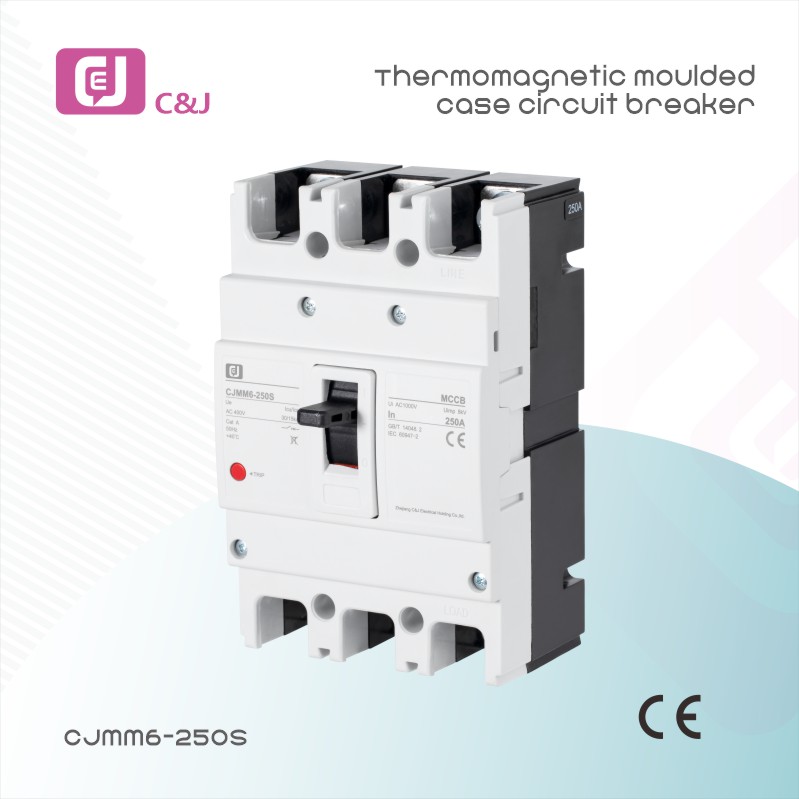MCCB Molded Case Circuit Breaker: An Essential Component in Electrical Systems
Molded case circuit breakers (MCCBs) are key components in electrical engineering and power distribution. MCCBs protect electrical circuits from overloads and short circuits, playing a vital role in ensuring the safety and reliability of electrical systems across a wide range of applications.
Understanding Molded Case Circuit Breakers
A molded case circuit breaker (MCCB) is an electromechanical device that automatically disconnects a circuit when it detects a fault, such as an overload or short circuit. Unlike traditional fuses, which must be replaced after a fault occurs, MCCBs can be reset and reused, making them a more efficient and cost-effective circuit protection solution.
The structure of a molded case circuit breaker (MCCB) consists of a molded plastic case that houses the internal components, which typically consist of a bimetallic strip for overload protection and an electromagnetic mechanism for short-circuit protection. This design is both durable and compact, making the MCCB suitable for a variety of installation environments.
Main features of MCCB
- Adjustable Settings: A major advantage of molded case circuit breakers is their adjustable trip settings. Users can customize the rated current to suit their specific application, providing greater flexibility in protecting different types of electrical loads.
- Multi-pole: Molded case circuit breakers (MCCBs) are available in a variety of configurations, including single-pole, double-pole, and three-pole. This versatility enables their use in a wide range of applications, from residential to industrial settings.
- Integrated Protection: Many modern molded case circuit breakers are equipped with additional protection features, such as ground fault protection and surge protection. These enhanced features provide an extra layer of safety, especially in environments where sensitive equipment is used.
- Visual Indicator: Most molded case circuit breakers (MCCBs) are equipped with a visual indicator to show the status of the circuit breaker. This feature allows quick identification of whether the circuit breaker is in the open (ON) or closed (OFF) position, simplifying maintenance and troubleshooting.
Application of MCCB
Molded case circuit breakers (MCCBs) are widely used in residential, commercial, and industrial settings. In residential settings, they protect household electrical circuits from overloads, ensuring the safety of appliances and electronic equipment. In commercial buildings, MCCBs are essential for protecting lighting systems, heating, ventilation, and air conditioning (HVAC) equipment, and other critical infrastructure.
In industrial settings, molded case circuit breakers (MCCBs) are essential for protecting machinery from electrical faults. They are often used in motor control centers to help manage power to large motors and prevent damage from power surges.
Advantages of using MCCB
Using a molded case circuit breaker (MCCB) offers numerous advantages over traditional circuit protection methods. Its post-fault reset function and adjustable settings make it a more user-friendly option. Furthermore, the MCCB\’s compact design allows for efficient use of switchboard space, which is particularly beneficial in space-constrained environments.
Additionally, the reliability and durability of molded case circuit breakers help reduce downtime in industrial operations. By minimizing the risk of electrical failures, businesses can maintain productivity and avoid costly repairs.
In short
Simply put, the molded case circuit breaker (MCCB) is an indispensable component in modern electrical systems. Its reliable overload and short-circuit protection, rich functionality, and user-friendly design make it the preferred choice of engineers and electricians. As technology continues to advance, the role of the MCCB in ensuring electrical safety and efficiency will only grow in importance, securing a permanent place in future electrical engineering.
Post time: Sep-09-2025



